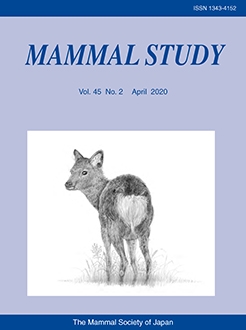Tropical rice fields with asynchronous growth stages provide a good model to investigate the effects of landscape heterogeneity on the use of agricultural landscapes by wildlife. The small-clawed otter (Aonyx cinereus) uses rice fields as latrine sites in Southeast Asia. Through a 53-week survey of latrine sites, we analyzed the spatiotemporal patterns of latrine-site use by small-clawed otters in an asynchronous rice field in West Sumatra, Indonesia. Based on a generalized linear mixed model incorporating local environmental factors, otter latrine-site visitation was positively associated with the vegetative stage of rice cultivation and the biomass of a major prey item, the golden apple snail (Pomacea canaliculata). The vegetative stage of rice cultivation and golden apple snail biomass were closely associated with deep water in rice fields; therefore, water availability in rice fields is likely important in determining the spatiotemporal patterns of small-clawed otter latrine-site use in the asynchronous rice field landscape. To consistently provide latrine sites for small-clawed otters, we recommend that asynchronous rice cultivation be maintained, or zoning of synchronous and asynchronous rice cultivation areas be planned in the region.
How to translate text using browser tools
6 April 2020
Spatiotemporal Patterns of Latrine-Site Use by Small-Clawed Otters in a Heterogeneous Rice Field Landscape
Aadrean .,
Nisikawa Usio
ACCESS THE FULL ARTICLE
<
Previous Article
|

Mammal Study
Vol. 45 • No. 2
April 2020
Vol. 45 • No. 2
April 2020
asynchronous cultivation
generalized linear mixed model
prey availability
water availability




